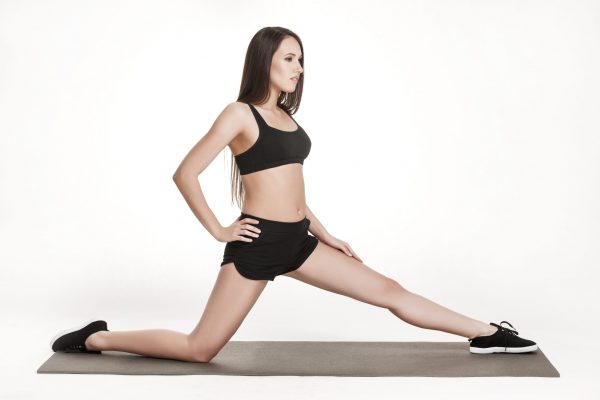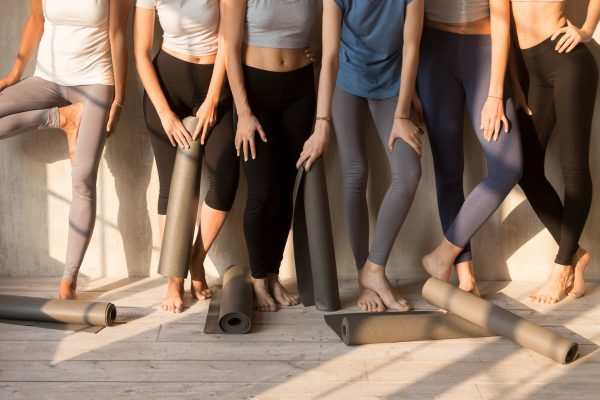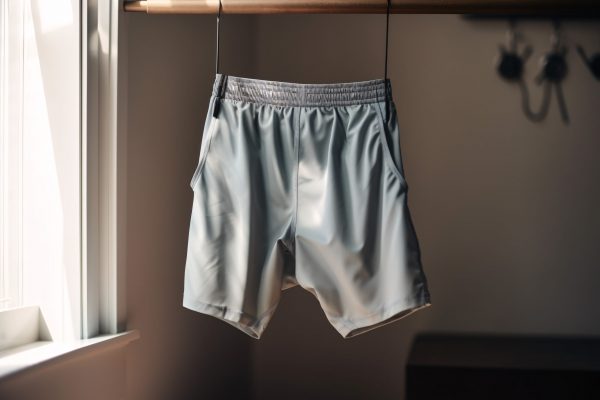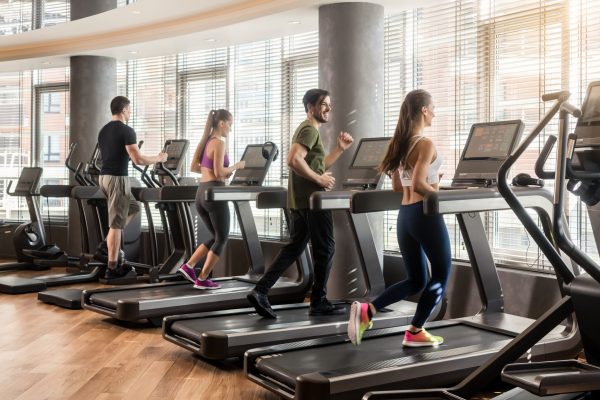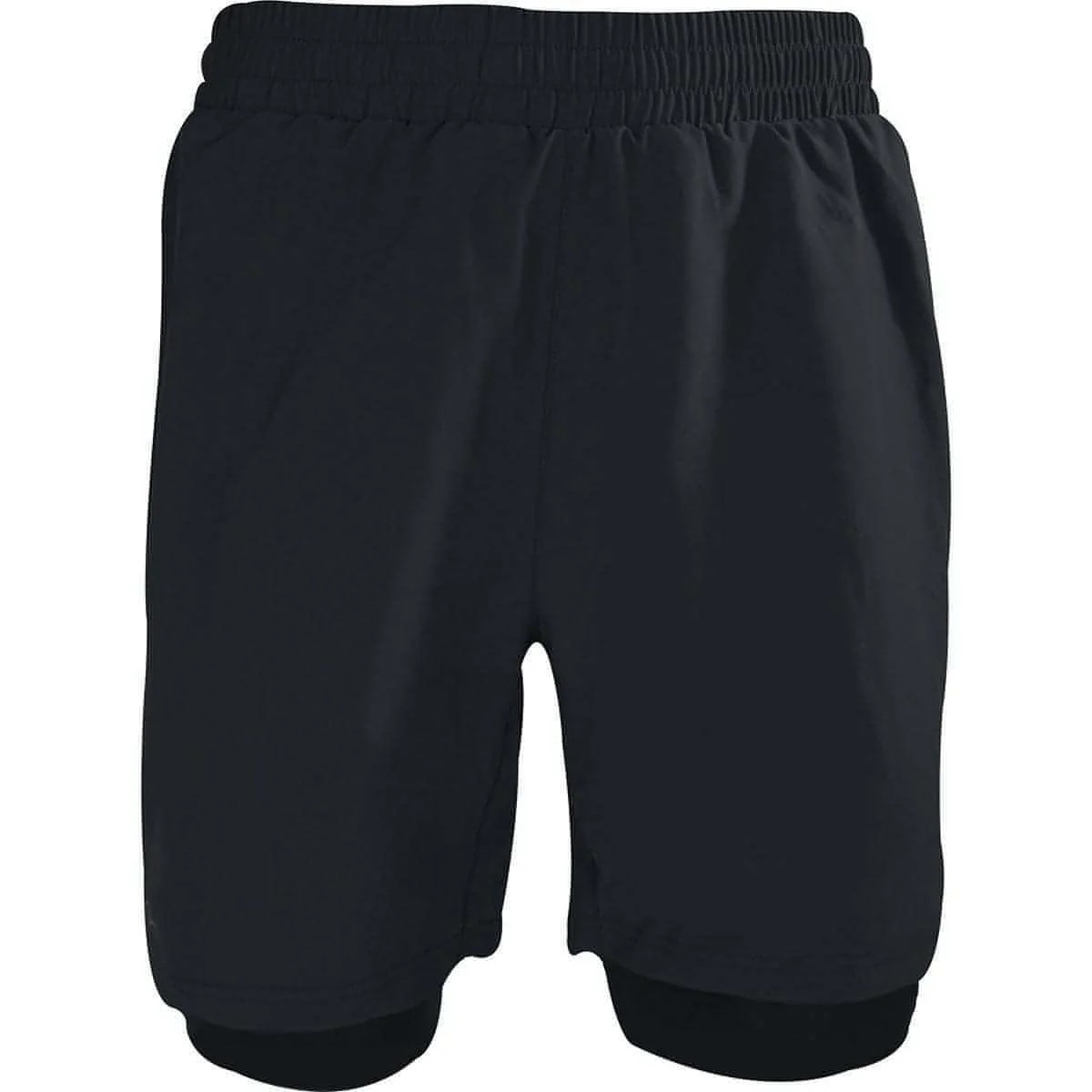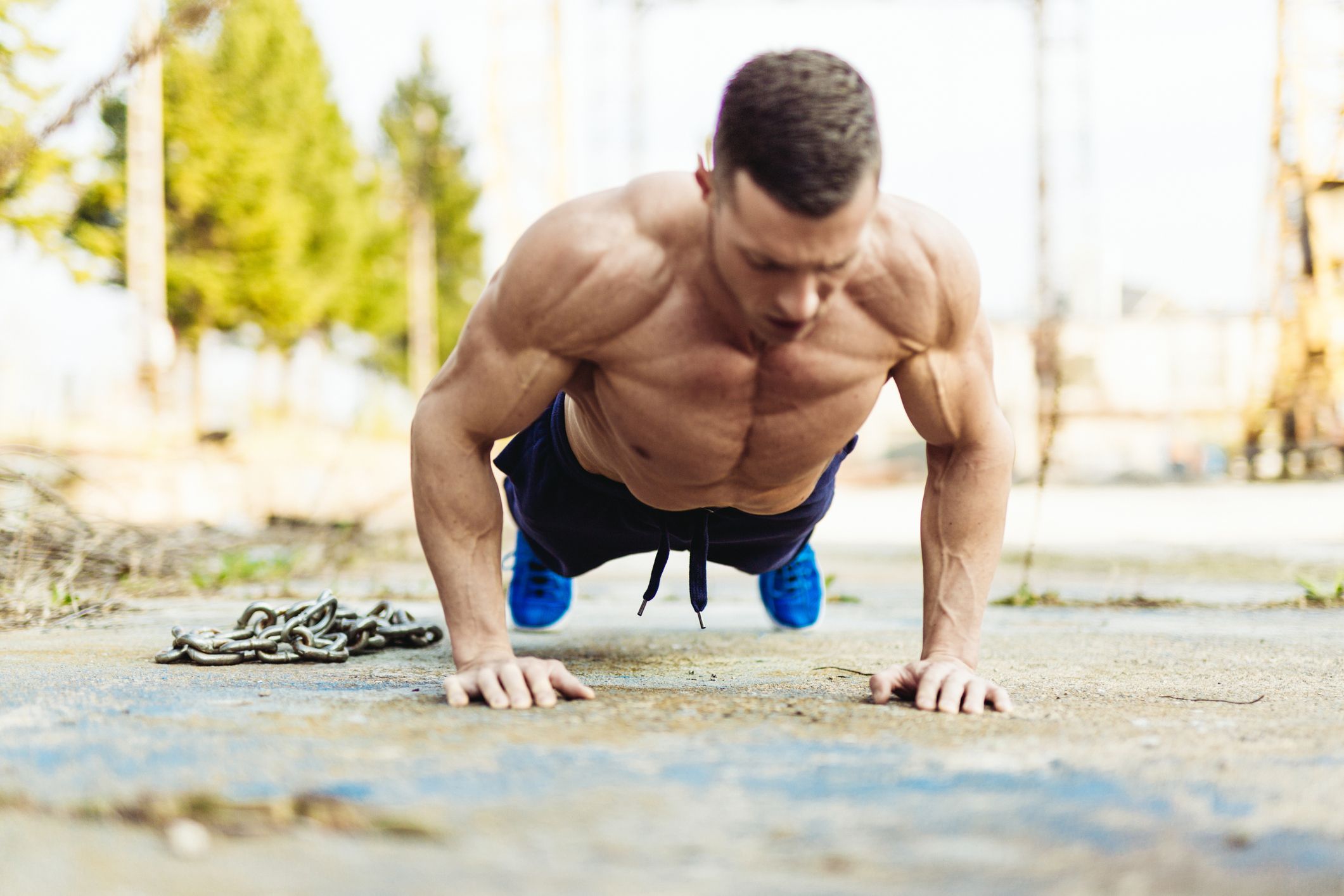

Featured
What Do Pushups Workout
Modified: August 21, 2023
Discover what pushups workout and the muscles they target. Get featured in our comprehensive guide to pushups workouts for a strong upper body.
Introduction
Welcome to the world of fitness and exercise! If you’re looking to improve your overall strength and fitness level, pushups are an excellent exercise to incorporate into your routine. Pushups are a classic and effective bodyweight exercise that target a wide range of muscles, making them a versatile and efficient choice.
In this article, we will explore the various muscles that pushups work out and discuss the benefits of incorporating pushups into your fitness regimen. Whether you’re a beginner or a seasoned fitness enthusiast, understanding the muscle groups involved in pushups can help you optimize your workouts and achieve your fitness goals.
Before we dive into the details, it’s important to note that pushups not only strengthen and tone muscles but also improve overall endurance and coordination. Plus, they require no equipment, making them an accessible exercise for people of all fitness levels.
So, let’s get started and learn about the muscles targeted by pushups and the benefits they provide!
Muscles Targeted by Pushups
Pushups are a compound exercise that engage multiple muscle groups simultaneously. They primarily target the muscles of the upper body, including the chest, shoulders, and triceps. Additionally, pushups also engage the core muscles and lower body to some extent.
Let’s explore each muscle group and the specific muscles worked during pushups:
- Upper Body Muscles: Pushups primarily work the muscles in the upper body, including the chest, shoulders, and triceps.
- Chest Muscles: The pectoralis major and pectoralis minor, commonly referred to as the chest muscles, are the main muscles targeted during pushups. These muscles are responsible for the horizontal adduction of the shoulder joint.
- Shoulder Muscles: The deltoid muscles, located at the top of the shoulders, are actively engaged during pushups. They assist in stabilizing the shoulder joint and aiding in the movement of the arms.
- Triceps Muscles: The triceps brachii, located on the back of the upper arm, are heavily recruited during pushups. These muscles assist in extending the elbow joint, allowing for the pushing action.
In addition to the upper body muscles, pushups also engage the core muscles and lower body to a lesser extent.
- Core Muscles: The core muscles, including the rectus abdominis, obliques, and transverse abdominis, play a significant role in stabilizing the body during pushups. They help maintain proper form and alignment throughout the exercise.
- Abdominal Muscles: The rectus abdominis, commonly known as the abs, are activated to stabilize the torso and prevent sagging or sinking during the pushup movement.
- Lower Body Muscles: While not the primary focus, pushups also engage some muscles in the lower body.
Now that we understand the various muscle groups targeted by pushups, let’s explore the benefits of incorporating pushups into your fitness routine.
Upper Body Muscles
The upper body muscles play a crucial role in performing pushups effectively. By engaging and strengthening these muscles, you can improve your overall upper body strength and functionality.
Here are the main upper body muscles targeted during pushups:
- Chest Muscles: Pushups are renowned for effectively targeting the chest muscles, specifically the pectoralis major and pectoralis minor. These muscles are responsible for horizontal adduction, which involves bringing the arms towards the midline of the body. Strengthening the chest muscles through pushups can enhance the appearance and tone of your chest while improving overall upper body strength.
- Shoulder Muscles: The deltoid muscles, located at the top of the shoulders, are also significantly engaged during pushups. These muscles assist in stabilizing the shoulder joint and contribute to the movement of the arms. As a result, pushups can help strengthen and sculpt the shoulders, giving them a more defined and balanced appearance.
- Triceps Muscles: The triceps brachii muscles, located on the back of the upper arm, are another key muscle group targeted during pushups. These muscles are responsible for extending the elbow joint and play a vital role in the pushing action of the exercise. By regularly performing pushups, you can effectively tone and strengthen your triceps, leading to improved arm definition and functional strength.
Engaging these upper body muscles through pushups not only enhances their strength but also improves their endurance. Over time, you will notice increased stability and power in your upper body movements, enabling you to perform various daily activities and sports with greater ease.
It’s important to note that while pushups primarily target these muscles, they also engage other surrounding muscles, such as the biceps, back muscles, and even the muscles of the lower body to a lesser extent. This compound movement, involving multiple muscle groups, contributes to the overall effectiveness and efficiency of pushups as a full-body exercise.
Now that we’ve explored the upper body muscles targeted during pushups, let’s delve into the specific muscles of the chest that benefit from this exercise.
Chest Muscles
The chest muscles, or pectoral muscles, are a major focal point when it comes to pushups. By incorporating pushups into your workout routine, you can effectively target and strengthen these muscles, leading to a more defined and sculpted chest.
There are two main muscles in the chest that are worked during pushups: the pectoralis major and the pectoralis minor.
- Pectoralis Major: The pectoralis major is the larger of the two chest muscles and is responsible for the bulk and shape of the chest. It helps in movements such as horizontal adduction, which involves bringing the arms closer to the midline of the body. Pushups place significant stress on the pectoralis major, making it a primary muscle that is strengthened and toned through this exercise.
- Pectoralis Minor: The pectoralis minor is a smaller muscle located beneath the pectoralis major. While it doesn’t contribute as much to chest size or shape, it plays a crucial role in stabilizing the shoulder joint during pushups. This muscle helps maintain proper form and alignment, ensuring that the exercise is performed correctly and effectively.
When performing pushups, the chest muscles are activated as you lower your body towards the ground and then push back up. This movement requires the chest muscles to contract and exert force against gravity. Over time, this repetitive contraction and relaxation of the chest muscles during pushups lead to increased strength and endurance.
Incorporating pushups into your workout routine is an effective way to develop a well-defined and strong chest. Whether your goal is to increase muscle mass, improve upper body strength, or enhance your overall physique, regularly engaging the chest muscles through pushups can help you achieve your desired results.
It’s important to note that the pectoralis major and pectoralis minor are not isolated muscles but are part of a larger network of muscles in the upper body. As you perform pushups, other neighboring muscles, such as the deltoids, triceps, and even the core muscles, also contribute to the overall movement and stability.
Now that we’ve covered the chest muscles, let’s move on to discussing the muscles of the shoulders that are targeted during pushups.
Shoulder Muscles
Pushups are an effective exercise for targeting and strengthening the muscles of the shoulders. By incorporating pushups into your workout routine, you can improve the strength, stability, and overall appearance of your shoulder muscles.
The primary muscle groups in the shoulders that are activated during pushups are the deltoid muscles.
- Anterior Deltoid: The anterior deltoid, also known as the front deltoid, is located in the front of the shoulder. It plays a significant role in shoulder flexion and horizontal adduction, which are key movements during pushups. This muscle is responsible for bringing the arms forward and inward as you lower your body towards the ground during pushups.
- Medial Deltoid: The medial deltoid, or lateral deltoid, is located on the side of the shoulder. It assists in shoulder abduction, which involves lifting the arms away from the body. During pushups, the medial deltoid works synergistically with the other shoulder muscles to stabilize and support the shoulder joint.
- Posterior Deltoid: The posterior deltoid is located at the back of the shoulders. While it is not directly targeted during regular pushups, it does play a secondary role in stabilizing the shoulder joint and preventing excessive internal rotation. Exercises like wide-arm pushups or decline pushups can engage the posterior deltoid to a greater extent.
Engaging and strengthening these shoulder muscles through pushups can have several benefits. Strong and well-developed shoulders not only contribute to a more aesthetically pleasing upper body but also improve overall functional strength. Enhanced shoulder strength can help with various daily activities that involve lifting, carrying, or pushing objects.
It’s important to maintain proper form and technique while performing pushups to effectively target the shoulder muscles. This involves keeping the shoulders aligned with the elbows and wrists, avoiding excessive rotation or shrugging of the shoulders.
As with any exercise, it’s essential to listen to your body and start with appropriate variations or modifications if needed. Pushups can be challenging initially, but with consistent practice and progression, you can gradually build strength and endurance in your shoulder muscles.
Now that we’ve covered the shoulder muscles targeted during pushups, let’s move on to discussing the triceps muscles and their role in this exercise.
Triceps Muscles
The triceps brachii, commonly known as the triceps, are a group of muscles located at the back of the upper arm. These muscles play a significant role in arm extension and are actively engaged during pushups.
During a pushup, the triceps muscles contract as you push your body away from the ground. This movement involves extending the elbow joint, allowing for the straightening of the arms. The triceps are responsible for generating the force necessary to complete this pushing action.
Here are the specific muscles that make up the triceps:
- Long Head: The long head of the triceps is situated on the back of the upper arm and is the largest of the three heads. It originates at the scapula and attaches to the ulna bone in the forearm. This head is particularly emphasized during exercises that involve shoulder extension.
- Lateral Head: The lateral head is located on the outer side of the upper arm. It runs alongside the long head and is responsible for the width and thickness of the triceps.
- Medial Head: The medial head is located on the inner side of the upper arm, below the long head. It adds depth to the triceps and helps contribute to overall arm strength and definition.
Strengthening and toning the triceps through pushups can have several benefits, both functionally and aesthetically. Here are some of the advantages of working the triceps:
- Arm Strength: The triceps are a crucial muscle group for various pushing and pressing movements. Strengthening them through pushups can improve your ability to perform other exercises that require arm extension, such as overhead presses or dips.
- Arm Definition: Well-developed triceps contribute to overall arm shape and definition. Toning and strengthening these muscles can help create a more sculpted appearance and enhance the aesthetic appeal of your arms.
- Functional Tasks: Strong triceps are essential for everyday activities that involve pushing or lifting objects. By improving triceps strength through exercises like pushups, you can make these tasks easier and more efficient.
During pushups, it’s important to maintain proper form and alignment to effectively target the triceps. Keep the elbows close to your body as you lower and raise yourself, ensuring that the triceps bear the majority of the load.
Now that we’ve discussed the triceps muscles and their role during pushups, let’s move on to exploring the core muscles engaged in this exercise.
Core Muscles
While pushups are primarily known for their upper body benefits, they also engage the core muscles to a significant extent. The core muscles play a crucial role in stabilizing the body and maintaining proper form during the exercise.
The core muscles are a complex group of muscles that include the rectus abdominis, obliques, transverse abdominis, and the muscles of the lower back. Here’s how each muscle group contributes to your pushup performance:
- Rectus Abdominis: The rectus abdominis, also known as the “six-pack” muscle, is located in the front of the abdomen. During pushups, it acts as a stabilizer, helping to maintain a straight and aligned torso. Engaging the rectus abdominis can improve core stability and promote optimal muscle activation throughout the exercise.
- Obliques: The obliques are located on the sides of the abdomen and assist in torso rotation and lateral flexion. They play a crucial role in maintaining proper alignment and stability during pushups. Strengthening the obliques can improve overall core strength and enhance rotational stability in various movements and sports.
- Transverse Abdominis: The transverse abdominis is a deep muscle that wraps around the abdomen, acting as a natural girdle. It provides core stability by compressing the abdominal contents and supporting the spine. Engaging the transverse abdominis during pushups can improve core stability and protect the lower back.
- Lower Back Muscles: The muscles of the lower back, including the erector spinae, also play a role in stabilizing the spine during pushups. These muscles ensure proper alignment and help prevent excessive arching or sagging of the lower back.
By engaging the core muscles during pushups, you not only enhance your overall stability but also improve functional strength. A strong core is crucial for maintaining proper posture, preventing lower back pain, and ensuring efficient movement during various physical activities.
It’s important to maintain a neutral spine and engage the core muscles throughout the entire duration of the pushup. Avoid sagging or arching the back, as this can put unnecessary strain on the lower back and decrease the effectiveness of the exercise.
Incorporating pushups into your fitness routine is an effective way to strengthen and tone the core muscles while also targeting the upper body. As your core strength improves, you may notice improved stability not only during pushups but also in other exercises and daily activities.
Now that we’ve covered the core muscles, let’s explore the lower body muscles targeted during pushups.
Abdominal Muscles
When it comes to pushups, the abdominal muscles play a crucial role in maintaining a stable and aligned body position. As you perform pushups, the abdominal muscles engage to help stabilize the torso and prevent sagging or sinking during the movement.
The main abdominal muscles worked during pushups are the rectus abdominis, commonly known as the “abs.” Here’s how the abdominal muscles contribute to your pushup performance:
- Rectus Abdominis: The rectus abdominis is a pair of long, vertically-oriented muscles that make up the well-known “six-pack” abs. During pushups, the rectus abdominis contracts to stabilize the torso and prevent excessive sagging or arching of the lower back. Engaging the rectus abdominis helps maintain proper form and alignment throughout the exercise.
While the primary focus of pushups is on the upper body, engaging the abdominal muscles is essential for maintaining stability and promoting proper body mechanics. By incorporating pushups into your workout routine, you can strengthen and tone the abdominal muscles, leading to improved core stability and overall functional strength.
In addition to their role in pushups, strong abdominal muscles have several other benefits:
- Improved Posture: Strong abdominal muscles help support the spine and promote good posture. By strengthening the abs through pushups and other core exercises, you can reduce the likelihood of developing poor posture or lower back pain.
- Injury Prevention: A strong core is essential for injury prevention, as it helps maintain stability and proper body alignment during physical activities. By strengthening your abs through exercises like pushups, you can reduce the risk of injuries and improve overall performance.
- Functional Movements: The abdominal muscles play a significant role in various functional movements, such as bending, reaching, and twisting. By strengthening your abs through pushups, you can enhance your ability to perform these movements efficiently and with better control.
It’s important to engage the abdominal muscles throughout the entire pushup, focusing on maintaining proper alignment and stability. Avoid letting the lower back sag or arch excessively, as this can put unnecessary strain on the spine.
By incorporating pushups into your fitness routine and engaging the abdominal muscles, you can strengthen your core, improve stability, and enhance overall physical performance.
Now that we’ve covered the abdominal muscles, let’s explore the lower body muscles targeted during pushups.
Lower Body Muscles
Although pushups primarily focus on the upper body, they also engage some of the muscles in the lower body to a lesser extent. While the lower body involvement in pushups is not as significant as the upper body and core, it still contributes to the overall stability and function of the exercise.
Here are the main lower body muscles that are activated during pushups:
- Quadriceps Muscles: The quadriceps muscles, located in the front of the thigh, play a role in stabilizing the lower body during pushups. These muscles help keep the legs straight and provide support throughout the exercise.
- Gluteus Muscles: The gluteus muscles, specifically the gluteus maximus, are engaged to a lesser extent during pushups. They assist in maintaining stability and proper alignment of the lower body.
- Hamstring Muscles: The hamstring muscles, located at the back of the thigh, are also involved in stabilizing the body during pushups. They provide support and assist in maintaining proper body positioning throughout the exercise.
While the lower body muscles are not the primary focus of pushups, their engagement helps contribute to overall stability and enhances the full-body nature of the exercise. By maintaining proper form and alignment, you can ensure optimal activation of these muscles.
It’s important to note that if you want to specifically target and strengthen the lower body muscles, additional exercises such as squats, lunges, or leg presses should be incorporated into your routine. However, pushups can still provide some benefits for the lower body, especially as a compound and full-body exercise.
Now that we’ve covered the muscles targeted during pushups, let’s explore the numerous benefits of incorporating pushups into your fitness routine.
Quadriceps Muscles
The quadriceps muscles, located in the front of the thigh, play a significant role in stabilizing the lower body during pushups. Although pushups primarily focus on the upper body, engaging the quadriceps adds to the overall stability and function of the exercise.
The quadriceps are a group of four muscles that work together to extend the knee joint and straighten the leg. Here are the specific muscles that make up the quadriceps:
- Rectus Femoris: The rectus femoris is the only quadriceps muscle that crosses both the hip and knee joints. It is responsible for flexing the hip and extending the knee. During pushups, the rectus femoris stabilizes the lower body and helps maintain proper body alignment.
- Vastus Lateralis: The vastus lateralis is the largest quadriceps muscle and is situated on the outer side of the thigh. It primarily contributes to knee extension and provides stability to the lower body during pushups.
- Vastus Medialis: The vastus medialis is located on the inner side of the thigh, just above the knee. It helps in stabilizing the patella (kneecap) and assists in knee extension. Engaging the vastus medialis during pushups contributes to overall lower body stability.
- Vastus Intermedius: The vastus intermedius is situated between the vastus lateralis and vastus medialis. It works in conjunction with the other quadriceps muscles to extend the knee joint and provide support during pushups.
While the quadriceps muscles are not the primary focus of pushups, they play a role in maintaining proper lower body positioning and stability. Engaging the quadriceps during pushups can help ensure a strong and stable base.
It’s important to note that to specifically target and strengthen the quadriceps, additional exercises such as squats, lunges, or leg extensions should be incorporated into your workout routine. However, the engagement of the quadriceps in pushups adds a dynamic element to the exercise, making it a compound movement that benefits multiple muscle groups simultaneously.
Now that we’ve covered the quadriceps muscles, let’s explore the role of the gluteus muscles in pushups.
Gluteus Muscles
While pushups primarily target the upper body, the gluteus muscles, specifically the gluteus maximus, also have some involvement in the exercise. The gluteus muscles are a group of three muscles located in the buttocks region, and they play a minor role in maintaining stability and alignment during pushups.
The gluteus maximus, being the largest muscle in the gluteal group, provides significant support to the lower body during pushups. It assists in maintaining proper posture and stability by helping to prevent excessive arching or sagging of the lower back.
Although the engagement of the gluteus muscles is not as prominent as in exercises specifically targeting the lower body, the activation of these muscles during pushups can provide additional benefits:
- Stability: The gluteus maximus helps stabilize the hips and lower body during pushups, contributing to overall stability and proper alignment.
- Power Transfer: The glutes assist in transferring power from the lower body to the upper body during the pushup movement, enhancing the efficiency and effectiveness of the exercise.
- Functional Strength: Engaging the gluteus muscles during pushups can help develop functional strength, which is essential for various daily activities that involve lower body movement and stability.
While pushups alone may not be sufficient for specifically targeting and strengthening the gluteus muscles, incorporating exercises such as squats, lunges, or hip thrusts into your routine can help develop these muscles to a greater extent.
Proper form is crucial to effectively engage the gluteus muscles during pushups. Make sure to maintain a straight line from the shoulders to the heels while keeping the gluteus muscles activated throughout the exercise.
Now that we’ve covered the gluteus muscles, let’s examine the involvement of the hamstring muscles during pushups.
Hamstring Muscles
The hamstring muscles, located at the back of the thigh, also play a minor role in the stability and function of pushups. While pushups primarily focus on the upper body, engaging the hamstrings aids in maintaining proper lower body positioning and stability during the exercise.
The hamstrings consist of three muscles: the biceps femoris, semitendinosus, and semimembranosus. These muscles work together to assist in knee flexion and hip extension. Although the engagement of the hamstrings in pushups is not as significant as in exercises specifically targeting the lower body, they contribute to overall lower body stability during pushups.
Here’s how the hamstring muscles are involved in pushups:
- Biceps Femoris: The biceps femoris is the largest muscle in the hamstrings. It assists in knee flexion and contributes to overall leg stability during pushups.
- Semitendinosus: The semitendinosus also plays a role in knee flexion and helps stabilize the leg during pushups.
- Semimembranosus: The semimembranosus, located on the inner side of the thigh, assists in hip extension and contributes to overall lower body stability during pushups.
While the main focus of pushups is on the upper body, engaging the hamstrings helps maintain proper alignment and stability throughout the exercise. This engagement contributes to the overall effectiveness and functionality of the movement.
It’s important to note that to specifically target and strengthen the hamstring muscles, additional exercises such as hamstring curls, deadlifts, or lunges should be incorporated into your workout routine. However, the involvement of the hamstrings in pushups adds to the comprehensive nature of the exercise, engaging multiple muscle groups simultaneously.
Now that we’ve covered the hamstring muscles, let’s conclude by summarizing the benefits of incorporating pushups into your fitness routine.
Benefits of Pushups
Pushups are a highly effective exercise that offer numerous benefits for both your physical and overall well-being. Whether you are a beginner or an advanced fitness enthusiast, incorporating pushups into your routine can help you achieve your fitness goals. Let’s explore the benefits of this versatile exercise:
- Increased Upper Body Strength: Pushups primarily target muscles in the upper body, such as the chest, shoulders, and triceps. Regularly performing pushups can lead to increased strength and muscle development in these areas, allowing you to easily perform daily activities that require pushing or lifting.
- Improved Core Stability: Pushups engage the core muscles, including the abdominals, obliques, and lower back muscles, to stabilize the body. By strengthening these muscles, pushups can improve your overall core stability, leading to better posture, balance, and injury prevention in other exercises and daily activities.
- Enhanced Muscular Endurance: Pushups are a great exercise for improving muscular endurance. By regularly performing pushups, you can increase your muscle stamina, allowing you to perform tasks and exercises for longer periods without fatigue.
- Promotes Full-Body Coordination: Pushups require coordination between different muscle groups, including the upper body, core, and lower body. By practicing this exercise, you can improve overall body coordination, balance, and kinesthetic awareness.
- Minimal Equipment and Space Requirement: One of the greatest advantages of pushups is that they can be done anywhere, anytime, without the need for any special equipment. Whether you’re at the gym, at home, or even traveling, you can easily incorporate pushups into your fitness routine.
- Versatile and Modifiable Exercise: Pushups offer a wide range of variations and modifications to suit different fitness levels and goals. Whether you’re a beginner starting with wall pushups or an advanced athlete performing one-arm pushups, pushups can be adapted to challenge and progress your fitness level.
- Enhances Overall Functional Fitness: As a compound exercise, pushups target multiple muscle groups and mimic natural movement patterns. By improving overall strength, stability, and coordination, pushups can enhance your overall functional fitness, making everyday activities easier and more enjoyable.
Remember, consistency is key when it comes to reaping the benefits of pushups. Start slowly, focus on maintaining proper form, and gradually increase the intensity and volume of your pushup workouts over time. With patience and dedication, pushups can be a valuable addition to your fitness routine, helping you build strength, improve muscle endurance, and enhance your overall physical performance.
Increased Upper Body Strength
One of the key benefits of incorporating pushups into your fitness routine is the development of increased upper body strength. Pushups primarily target the muscles in the upper body, including the chest, shoulders, and triceps. By regularly performing pushups, you can strengthen and tone these muscles, leading to improved overall upper body strength.
Here are some ways pushups can help increase your upper body strength:
- Chest Muscles: Pushups are a classic exercise for targeting the chest muscles. As you lower and push up your body, the pectoralis major and minor muscles in the chest contract and extend, increasing their strength and size. Strengthening the chest muscles through pushups can enhance the appearance and tone of your chest while improving overall upper body strength.
- Shoulder Muscles: The muscles in the shoulders, including the deltoids, are also heavily engaged during pushups. As you perform the movement, the shoulders stabilize and assist in the pushing action. Regularly incorporating pushups into your workout routine can help strengthen and sculpt the shoulders, leading to improved upper body strength and an aesthetically pleasing appearance.
- Triceps Muscles: The triceps brachii muscles, located at the back of the upper arm, play a significant role in the pushing action of pushups. As you straighten your arms, the triceps muscles contract, allowing you to push your body weight off the ground. By regularly engaging the triceps through pushups, you can tone and strengthen these muscles, improving arm definition and functional upper body strength.
Building upper body strength through pushups has several benefits beyond just aesthetic improvements:
- Improved Functional Movement: Increased upper body strength developed through pushups can enhance your ability to perform various daily activities that involve lifting, carrying, or pushing objects. Whether it’s carrying groceries, lifting a child, or moving furniture, having a strong upper body makes these tasks easier and more manageable.
- Injury Prevention: Strengthening the muscles in your upper body, particularly the chest, shoulders, and triceps, can help prevent injuries. A strong upper body provides stability and support to the joints and surrounding muscles, reducing the risk of strains or imbalances during physical activities or sports.
- Increased Power Output: Strong upper body muscles are vital for generating power in activities such as throwing, punching, or pushing. By developing upper body strength through pushups, you can enhance your performance in sports or activities that require explosive upper body movements.
Remember, progress and improvement in upper body strength require consistency and proper form. Start with modified or knee pushups if needed and gradually progress to full pushups as your strength increases. Challenge yourself by increasing the number of repetitions or exploring different pushup variations, such as diamond pushups or decline pushups. With dedication and regular practice, you will see steady gains in upper body strength.
Improved Core Stability
When it comes to pushups, one of the significant benefits is the improvement in core stability. The core muscles, which include the rectus abdominis, obliques, and lower back muscles, play a vital role in maintaining a stable and aligned body position during pushups. Regularly performing pushups can lead to improved core stability, which offers a wide range of advantages.
Here’s how pushups help improve core stability:
- Engagement of Core Muscles: Pushups require a strong and stable core to maintain proper form and alignment throughout the movement. The rectus abdominis, commonly known as the “abs,” along with the obliques and lower back muscles, work together to stabilize the torso and prevent sagging or sinking during pushups.
- Enhanced Postural Alignment: By strengthening the core muscles through pushups, you can improve overall posture and alignment. This not only enhances your physical appearance but also helps prevent postural imbalances or lower back pain that can result from weak core muscles.
- Better Balance and Control: Core stability is essential for maintaining balance and control during physical movements. A strong core allows for better control of the body’s center of gravity, improving balance and coordination both during pushups and in daily activities.
- Injury Prevention: Proper core stability reduces the risk of injury by providing support and stability to the spine and surrounding muscles during pushups. Strengthening the core through pushups can help prevent lower back pain and reduce the likelihood of musculoskeletal imbalances or strains.
- Transfer of Energy and Power: A stable core is crucial for the efficient transfer of energy and power throughout the body. By developing core stability through pushups, you can optimize the transfer of force from the lower body to the upper body, enhancing overall strength and power output.
Remember, maintaining proper form is key to engaging the core muscles effectively during pushups. Ensure that your body forms a straight line from head to heels, avoiding sagging or arching of the lower back. Contract the core muscles throughout the exercise to stabilize the body and distribute the workload evenly.
Besides pushups, various other exercises can target and strengthen the core muscles. Incorporate exercises such as planks, Russian twists, or bicycle crunches into your routine to further improve core stability and reap the full benefits.
By consistently practicing pushups and focusing on core engagement, you can significantly improve core stability, leading to improved posture, injury prevention, and enhanced overall physical performance.
Enhanced Muscular Endurance
Pushups are an excellent exercise for improving muscular endurance, which refers to the ability of muscles to sustain repeated contractions over an extended period. By regularly incorporating pushups into your fitness routine, you can develop enhanced muscular endurance that carries over to various physical activities and sports.
Here’s how pushups can help improve muscular endurance:
- Repetitive Muscle Contraction: During pushups, the muscles in the chest, shoulders, triceps, and core contract repeatedly as you lower and push up your body weight. The continuous contraction and relaxation of these muscles help build endurance over time.
- Progressive Overload: To improve muscular endurance, it’s important to gradually increase the difficulty and intensity of your pushup workouts. This can be done by increasing the number of repetitions, performing more challenging variations, or slowing down the tempo. By progressively overloading your muscles, you stimulate adaptations that lead to improved endurance capacity.
- Engagement of Slow-Twitch Muscle Fibers: Pushups predominantly activate slow-twitch muscle fibers, which have a greater resistance to fatigue compared to fast-twitch muscle fibers. The sustained contractions during pushups help train and strengthen these muscle fibers, improving endurance capacity.
- Increased Oxygen Utilization: Pushups are a demanding exercise that requires increased oxygen delivery to the working muscles. As your body adapts to the demands of pushups, your cardiovascular system becomes more efficient at delivering oxygen-rich blood to the muscles, enhancing endurance capacity.
- Transfer to Other Activities: Improved muscular endurance gained through pushups translates to improved performance in various physical activities and sports. Whether it’s running, cycling, or participating in team sports, enhanced muscular endurance enables you to perform for longer periods without experiencing early muscle fatigue.
It’s important to note that consistency and progression are key when it comes to developing muscular endurance. Gradually increase the number of pushups you can perform, push yourself to do an extra rep or two during each workout, and strive to maintain good form throughout.
Aside from pushups, incorporating other forms of endurance-based exercises into your routine, such as jogging, swimming, or cycling, can further enhance overall muscular endurance. By diversifying your training regimen, you challenge and strengthen different muscles, promoting well-rounded endurance development.
With regular practice and a focus on increasing endurance capacity through pushups, you can enjoy the benefits of improved muscular endurance, which include the ability to sustain physical activities for longer durations and perform at a higher level of intensity.
Promotes Full-Body Coordination
One of the significant benefits of incorporating pushups into your fitness routine is the improvement in full-body coordination. Pushups require the engagement and coordination of various muscle groups, making it an excellent exercise for enhancing overall coordination and body control.
Here’s how pushups promote full-body coordination:
- Muscle Group Synchronization: During pushups, multiple muscle groups, including the chest, shoulders, triceps, core, and lower body, need to work together in a coordinated manner. The synchronization of these muscle groups allows for smooth and controlled movement during the exercise.
- Balance and Stability: Maintaining balance and stability is crucial during pushups. The coordination between the upper body, core, and lower body helps in maintaining a straight and aligned body position. This balance and stability require consistent communication and coordination between the different muscle groups.
- Body Awareness: Performing pushups requires a heightened sense of body awareness. You need to be mindful of your body positioning, alignment, and muscle activation throughout the movement. Developing body awareness through pushups can enhance your overall coordination and proprioception.
- Linking Upper and Lower Body Movements: Pushups involve both upper body pushing movements and lower body stabilization. Coordinating these movements allows for efficient transfer of force and energy throughout the body. The synergy between the upper and lower body helps optimize performance during pushups and translates to improved coordination in other activities.
- Neuromuscular Adaptations: Consistently performing pushups helps develop neuromuscular adaptations, improving the communication between the brain and muscles. Over time, this enhanced neuromuscular coordination allows for smoother, more efficient movement patterns, not only during pushups but also in other exercises and activities.
To maximize the coordination benefits of pushups, it’s essential to focus on proper form and technique. Pay attention to maintaining a straight line from head to heels, engage the core muscles, and visualize the connection between your upper and lower body movements throughout the exercise.
Aside from pushups, involving other exercises that require coordination, such as yoga or bodyweight strength training routines, can further enhance overall coordination skills. Diversifying your training and challenging your body through various movement patterns can help improve overall body coordination.
With consistent practice and a focus on coordination, you can enhance your full-body coordination through pushups. Improved coordination not only helps in performing pushups more effectively but also carries over to other physical activities, sports, and daily movements.
Conclusion
Pushups are a versatile and effective exercise for targeting multiple muscle groups and improving overall fitness. By incorporating pushups into your fitness routine, you can experience a wide range of benefits that enhance both physical strength and overall well-being.
From targeting upper body muscles such as the chest, shoulders, and triceps, to engaging core muscles and even involving lower body muscles to a lesser extent, pushups provide a comprehensive full-body workout. They promote increased upper body strength, improved core stability, enhanced muscular endurance, and better full-body coordination.
Pushups offer numerous advantages beyond just physical changes. They can be performed anywhere, without the need for equipment, making them accessible to people of all fitness levels. Pushups can be modified to suit individual capabilities and can be progressively intensified as strength and stamina increase.
Incorporating pushups into your workout routine is a time-efficient way to improve strength and endurance in multiple muscle groups while enjoying the added benefits of enhanced core stability and coordination. Consistency and proper form are key to maximizing the benefits of pushups.
Remember, everyone’s fitness journey is unique, and it’s important to listen to your body, progress at your own pace, and modify exercises as needed. As with any exercise, it’s always recommended to consult with a healthcare professional or a qualified fitness trainer before starting a new fitness program.
So, whether you’re a beginner or a fitness enthusiast, consider adding pushups to your workout routine. With dedication, practice, and a focus on proper form, pushups can help you achieve your fitness goals, improve overall strength and endurance, and enhance your overall physical well-being.
